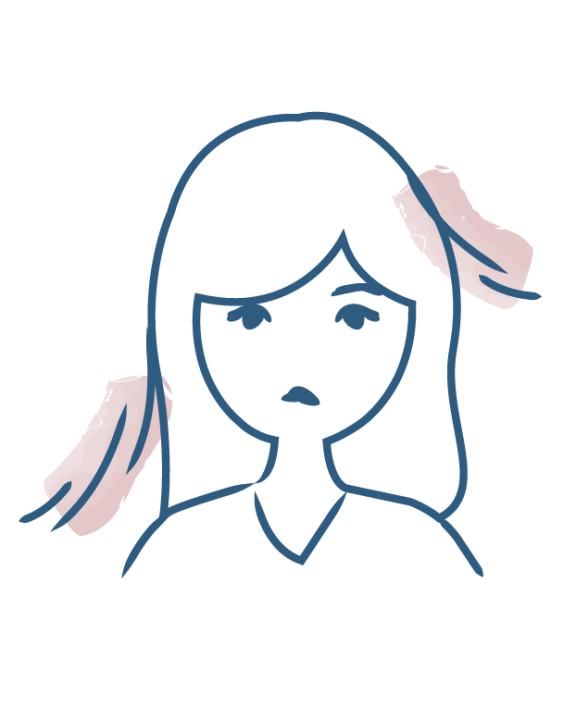Managing hair loss in everyday life
How should you style your hair in case of hair loss?
- The causes of hair loss
- Everything you need to know about seasonal hair loss
- Hair loss: the impact of iron, zinc, vitamin D, C and B12 deficiencies
- Hair loss and genetics
- What is traction alopecia?
- Drug-induced hair loss
- Hair loss and hormones
- Hair loss and fatigue
- Hair loss and the pill
- Secondary syphilis and hair loss
- Hair loss and menopause
- Pregnancy and hair loss: everything you need to know
- Hair loss due to ringworm of the scalp
- Hair loss due to stress: reactional hair loss
- Scarring alopecia
- Spot baldness and hair loss
- Androgenetic alopecia in women and men
- Hair loss and Covid

How should you style your hair in case of hair loss?
Many people affected by alopecia want to adapt their hairstyle to better conceal their hair loss. Discover some tips to easily achieve this and live better with your hair loss on a daily basis.
Alopecia in women: what is the best hairstyle to adopt?
Changing your haircut or hairstyle (depending on the progress of the hair loss) can be a good solution to better cope with alopecia in everyday life . In any case, this is the first thing to try before turning to hair implants, the longest-lasting but also the most expensive solution.
So, what is the best hairstyle for female alopecia? Short haircuts are those that best hide bald spots on the scalp. Good news: boyish haircuts are in! Because it requires less maintenance, short hair has the wonderful advantage of giving the illusion of healthier hair right away. Pixie, boyish, tapered... the possibilities are endless! You can also turn to the energetic cut technique to fight against hair loss: this is a razor cut that causes vibrations along the hair shaft, stimulating microcirculation in the scalp.
Short haircut: how can you make the transition?
The transition to a short haircut is not always easy.
The first good hair loss habits are therefore to:
- Consult a dermatologist to diagnose the exact type of hair loss. Or at least get in touch with a healthcare professional (your doctor or a pharmacist) to help guide you through the process.
- Make an appointment with a hair stylist. Thanks to his or her expertise in the field, a few well-placed scissor strokes can relieve the daily discomfort and help you live better with alopecia. Go step by step so that the change of cut is not too brutal.
For men with hair loss, a short hairstyle is also the solution.
Covering hairstyles for severe hair loss
When hair loss becomes too severe and the lack of hair density prevents the scalp from being covered, various hair complements are available for those who do not want to show their bare head:
- Wigs, whether natural or synthetic
- Headbands, turbans, hats and scarves made of fabric, which can replace or be used alternately with wigs;
- Fake bangs, to be slipped under a turban, a scarf to tie or a bonnet.
Do not hesitate to consult a socio-aesthetician to help and accompany you.
More information
- Discover Misconceptions about hair loss
Managing hair loss in everyday life
Misconceptions about hair loss
- Discover Hair loss: good habits
Managing hair loss in everyday life
Hair loss: good habits
- Discover What should you eat to limit hair loss?
Managing hair loss in everyday life
What should you eat to limit hair loss?
Our care routines
Hair loss
- Discover My Anti-hair loss for women post-pregnancy and breastfeeding women
My Anti-hair loss for women post-pregnancy and breastfeeding women
Are you experiencing hair loss?
- Discover Anti-occasional Hair loss routine for women less than 6 months
Anti-occasional Hair loss routine for women less than 6 months
Are you experiencing hair loss?
- Discover ANTI-OCCASIONAL HAIR LOSS ROUTINE FOR MEN LESS THAN 6 MONTHS
ANTI-OCCASIONAL HAIR LOSS ROUTINE FOR MEN LESS THAN 6 MONTHS
Are you experiencing hair loss?


